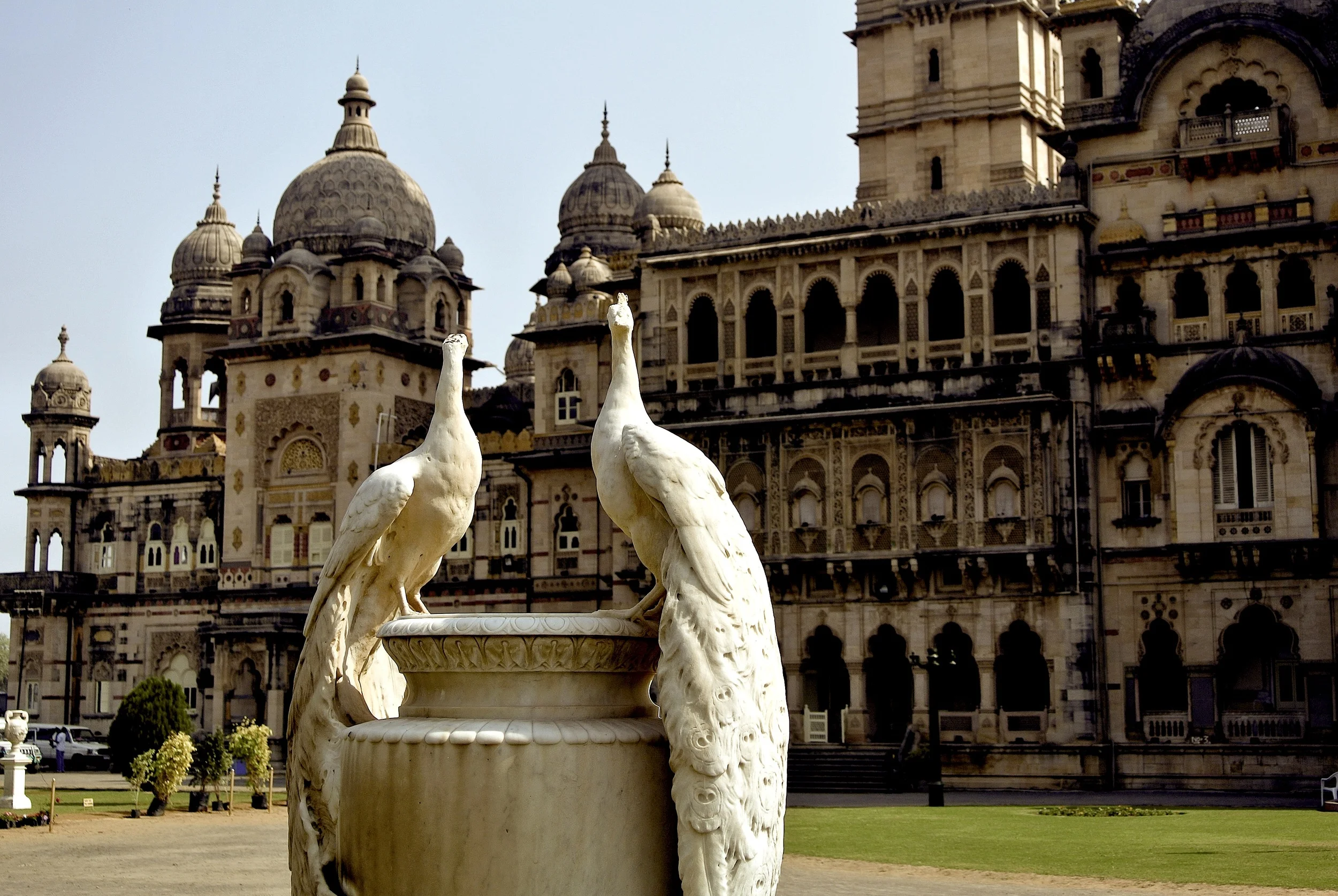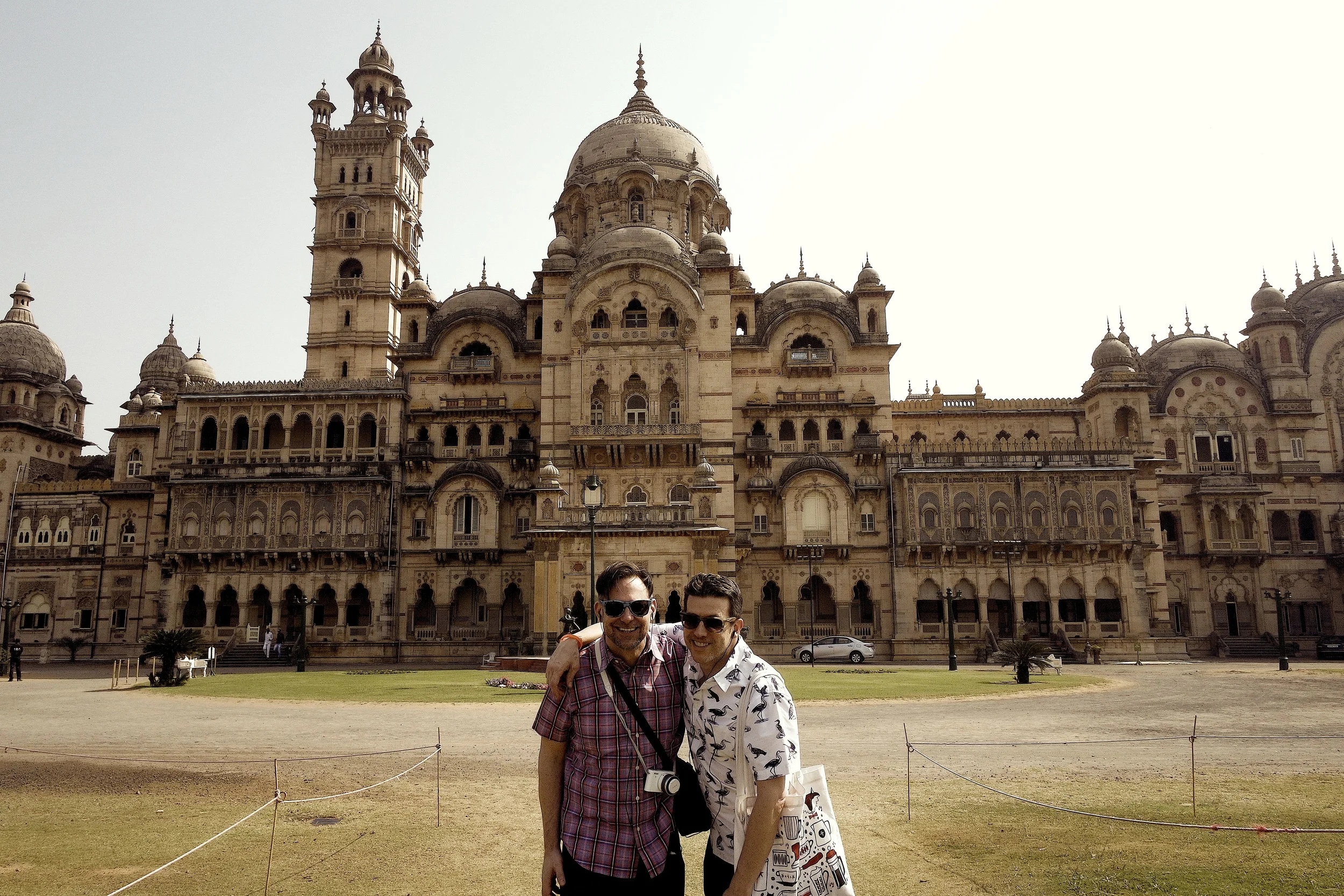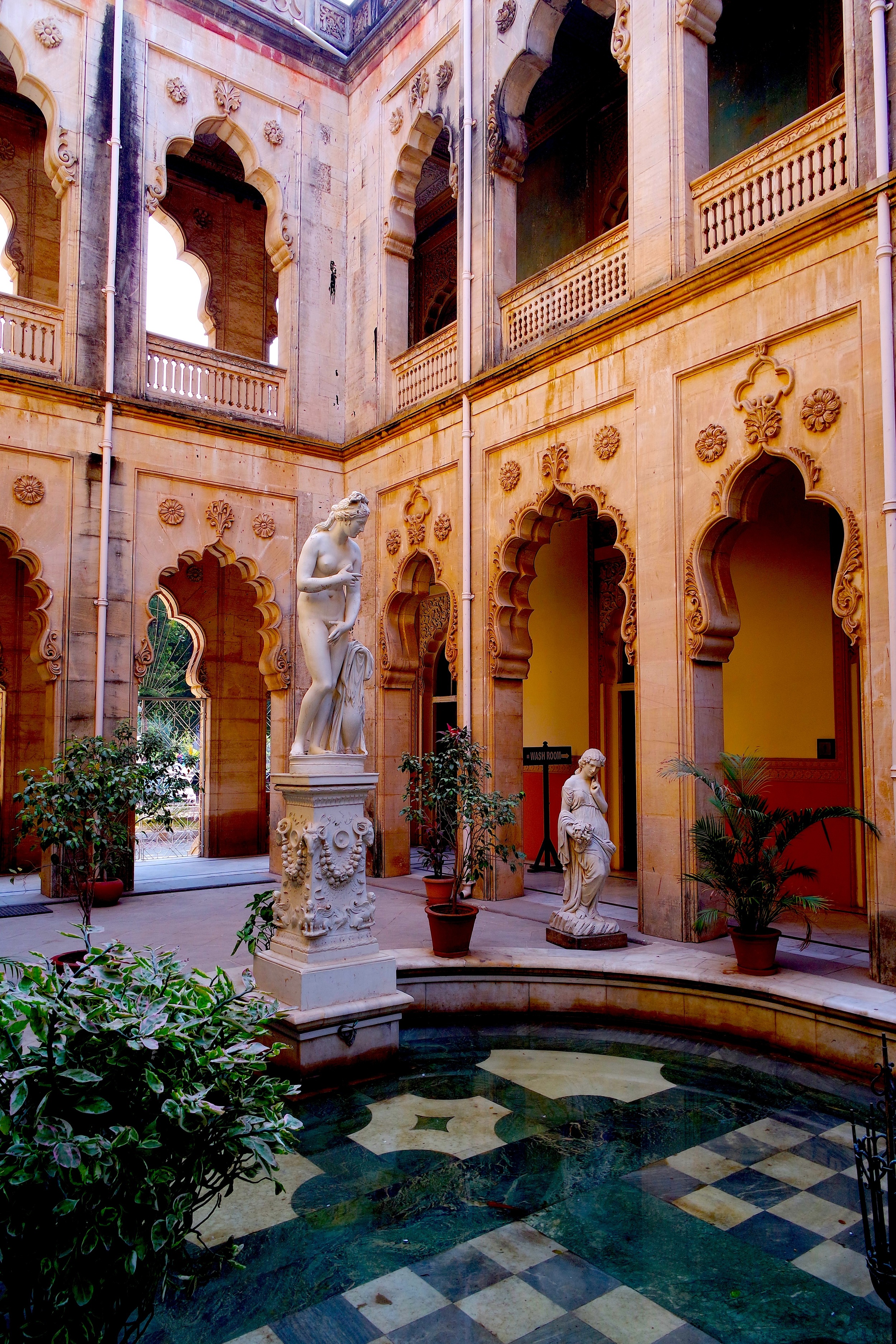Laxmi Vilas Palace in Vadodara, India, as seen from the back gardens
One of the must-see places to visit in Vadodara, India.
When we awoke early the following morning, the nearby ashram was playing devotional music, which George says is the same every day. Somehow there is something soothing in these sounds, paired with the way the light filtered through the window, a pink lemonade sun rising beside a lone radio tower.
Our first stop of the day was the Laxmi Vilas Palace. Home to the Gaekwad dynasty, the surname supposedly roughly translates to “cow door.” Or maybe “protector of cows.”
“Mant committed suicide for fear that he had got his calculations wrong and that the place would fall down.”
We stopped at the reception desk to pick up audio guides and met Avanish Pawal. He asked where we were from, as a relative of his is working in Milwaukee as an interior designer. He informed us that a few of the rooms were closed to the public because there was a photography shoot in progress.
We began our tour by viewing the palace from the garden, with its European-style statues, including a beautifully carved peacock urn.
Commissioned by Maharaja Sayajirao Gaekwad III, the palace’s original design was by architect Major Charles Mant, but was finished by Robert Fellowes Chisholm in 1890 after Mant committed suicide for fear that he had got his calculations wrong and that the place would fall down.
Duke and Wally in front of Laxmi Vilas Palace, a highlight of Vadodara, India
The palace was erected in Indo-Saracenic style — a fusing of traditional Indian design elements, Mughal Empire Saracenic style and Gothic Revival, which were favored by both Mant and Chisholm.
Local tradition holds that it was the most expensive private building constructed anywhere in the world during the 19th century.
At the time of construction, its interiors were considered quite modern, resembling a European estate with such amenities as elevators.
Part of the ground floor is open to the public. However, photography of the interior is prohibited.
One of the highlights for me was the armory, which displayed an impressive collection of swords, maces and claw-like weapons designed to fit over the knuckles called bagh naka, which means “tiger’s claw” in Hindi.
We didn’t get to see Durbar Hall, as it was closed for an elaborate photography shoot. But we did get to enjoy the Italianate courtyard with its marble statuary and water fountains just outside of it.
Gorgeous interior courtyard at Laxmi Vilas Palace in Vadodara, India
If there’s one attraction to see in Vadodara (commonly known as Baroda), this is it. –Duke























